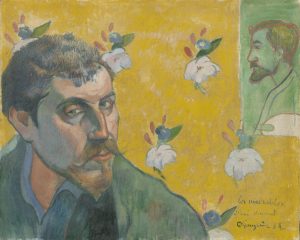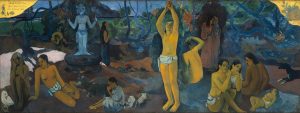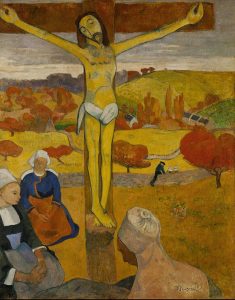Out With the Old, In With Nouveau
1895-1905
Lecture Summary
The Art Nouveau was a style shift which included brand new idea and designs and was lead by the youngins’ who have grown up during the industrial revolution. This explains the creative endeavors that artists and designers had faced in this period in incorporating the handcraft aspects of the Arts & Crafts movement with the use of machinery and tools from the Industrial Revolution. The combination of the two revolutions is most evident in architecture and furniture. Organic shapes and whiplash curves were incorporated in structures of buildings and furniture was mass produced to look handcrafted. The idea of organic shapes and curves was also evident in the paintings, illustrations, and poster designs created during this time. Art continued to be heavily influenced by nature, Celtic styles, Japonism and many other art movements that had taken place before.

Alfons Mucha – F. Champenois Imprimeur-Éditeur
Research
Paul Gauguin
Paul Gauguin was a French Painter born in Paris, France. He is classified as a post-impressionist painter yet his paintings are better classified as Synthesism, and Primitivism. Synthesism is the idea of heavily relying on symbolism and the artists’ feelings in the creation of art. Gauguin was depicted as someone who objects traditional European paintings and thought that these paintings lacked symbolic depth. He was heavily influenced by the symbolism that was present in Asian and African art.

Self-portrait, 1888
The natural passion as a Synthetist Artist brought Gauguin to travel to the tropics to explore the culture which is truly reflected in his pieces. He moved to Tahiti not only to indulge in its tropics but also because of his lack of recognition in Europe, and financial instability. As he spent his days in the tropics, his paintings had increasingly become classified as primitivism art. Primitivism is the idea of the creation of art, influenced by non-Western, “primitive” aspects.

Where Do We Come From? What Are We? Where Are We Going?, 1897
The characteristics that Gauguin had developed in his art have left an iconic mark in this era. There were many painters and philosophers who have influenced his style and meaning behind his art—painters such as Giotto, Raphael, Ingres, Eugène Delacroix, Manet, Degas, and Cézanne. The techniques that help Gauguin’s distinct style is his use of outlines, solid colors, and his motifs. Gauguin had completely disregarded the dramatic use of gradient shading and painted with solid non-representational colors (he did not use realistic colors). Because of his use of pure solid colours, he then used bold outlines to separate these colours in his compositions—this was also an imitation of the Ukiyo-e style prints.

The Yellow Christ (Le Christ jaune), 1889